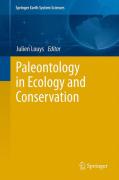
The fossil record contains unique long-term insights into how ecosystems formand function which cannot be determined simply by examining modern systems. It also provides a record of endangered species through time, which allow us tomake conservation decisions based on thousands to millions of years of information. The aim of this book is to demonstrate how palaeontological data has been or could be incorporated into ecological or conservation scientific studies. This book will be written by palaeontologists for modern ecologists and conservation scientists. Manuscripts will fall into one (or a combination) of fourbroad categories: case studies, review articles, practical considerations andfuture directions. This book will serve as both a '˜how to guide' and providethe current state of knowledge for this type of research. It will highlight the unique and critical insights that can be gained by the inclusion of palaeontological data into modern ecological or conservation studies. INDICE: Palaeontology and ecology - their common origins and later split.-Ecology needs a palaeontological perspective.- Reconciling Paleontological and Neontological Data: Issues of Scale, Taxonomy, and Taphonomy.- Building links between ecology and palaeontology with taphonomic studies of recent vertebrate communities.- Phylogeography and the fossil record.
- ISBN: 978-3-642-25037-8
- Editorial: Springer
- Encuadernacion: Cartoné
- Fecha Publicación: 31/05/2012
- Nº Volúmenes: 1
- Idioma: Inglés
